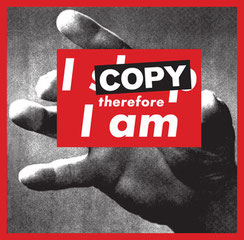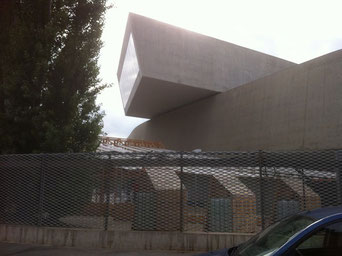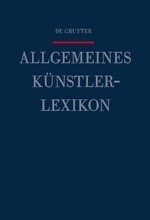Reviews

Maike Aden has been writing reviews reflecting on exhibitions, art institutions and trends which shape the present situation of the art world. Here a selection.
EXHIBITION REVIEW
REVOLUTIONS XENAKIS. EINE WÜRDIGUNG ANLÄSSLICH DER RETROSPEKTIVE IN DER PARISER PHILHARMONIE
In: VAN Magazin # 336, 23. Februar 2022

»Die Kunst, und vor allem die Musik (…) muss darauf abzielen, durch Fixierungen, die Orientierungspunkte sind, zu einer totalen Überhöhung zu gelangen, in der sich das Individuum verliert und sein Bewusstsein in einer unmittelbaren, seltenen, gewaltigen und vollkommenen Wahrheit verliert. Gelingt einem Kunstwerk das auch nur für einen einzigen Augenblick, so hat es sein Ziel erreicht« (Iannis Xenakis)
EXHIBITION CRITIQUE
ERWIN WURM. PHOTOGRAPHS, MEP PARIS
In: EIKON. International Magazine for Photography and Media Art, Nr. 110/111, Oct. 2020

"... Detailed studies of his Fat House focus on its bloated forms, which are reminiscent of cute plastic toys. The intended, but not necessarily comprehensible criticism of harmony-laden status symbols repeats an age-old contempt for the petite bourgeoisie that is in need of distinction. One would like to see more differentiated forms of making visible today's urgent possession categories. The series How to be Politically Incorrect (...) remain somewhere between slipperiness and thigh slappers. The exhibition ends with overpainted (half) nude photographs from the series De Profundis (...). The depth that the title evokes becomes shallowness. There are too many of these in this exhibition. One of them is Wurm's concept of sculpture, which simply cannot be passed off as an innovation..."
ESSAY
"LET’S DANCE LIKE WE USED TO...“. A CRITICAL INTERVENTION ON APPROPRIATIONISM
In: Kunstchronik, 69. Jahrgang, Heft 4, April 2016
Download: Appropriationism

"Art today disposes only about dead ideas and formulas which are unable to respond to the needs of our time." These words by Théophile Gautier, written in 1853 about the then rampant addiction to repetitions and imitations of past concepts seemingly undergo themselves a repetition and imitation in present times.
The here presented twenty theses reflect the recent trend of artistic recycling, that I call Appropriationism. The term includes every regressive manner of repeating past concepts, forms and names without explosiveness, agony or ambush. Conveying a general feeling of nostalgic indulgence, Appropriationism avoids reflecting on cultural and social horizons. I am aware that the theses do not correspond to a factual and objective debate; rather, they consciously formulate a concise and subjective polemic against a particular misunderstanding of what was formerly a very interesting artistic strategy.
EXHIBITION REVIEW
EIN AMERIKANER IN PARIS
»I ♥ John Giorno«, 21.10. 2015 - 10.1. 2016, Palais de Tokyo, Paris
In: Pop Zeitschrift, 14.11.2015
Essay: Online

“I ♥ John Giorno”. Der Ausstellungstitel klingt nicht nur reißerisch, er sieht auch so aus. (...) Ugo Rondinone hat die Räume des ansonsten auf stylischen Trashlook setzenden Pariser Palais de Tokyo in ein wohltuend klares und durch und durch schlüssiges Ausstellungsdisplay transformiert. Warum im Pressetext so viel Wirbel um ihn als Künstlerkurator gemacht wird, ist nicht ganz ersichtlich. Sei’s drum, der Ausstellung tut dieses Zugeständnis an die Star-Institution “Curartist” keinen Abbruch. (...) die durch sparsame Gesten, Repetitionen, Überlagerungen und Pausen rhythmisierte und musikalisierte Wortkunst voller Scharfsinn, Auflehnung und Verschwendung, aber auch voller Zartheit erzählt von fantastischem Gaysex und harter Pornographie ebenso wie von Alkohol, Marihuana, LSD, Konsumismus, Krieg, Zensur, Gehirnwäsche und Repressionen..."
- Weiterlesen...
- Überflüssig dagegen die Wiederholung des schlafenden John Giorno 35 Jahre später für Pierre Huyghes Film Sleeptalking (1998) – wären da nicht die dem Film unterlegten Kommentare John Giornos: “One of the reasons why the early 1960s was so great was that everyone of them, and I by chance happened to be one of them, did it for the first time.” Ironischerweise spricht John Giorno genau darüber, warum all die vielen Kopien, Imitationen und Nachahmungen vergangener Ikonen heute oft so langweilen und warum seine Poesie und Performances so stark und eindringlich sind.
BLOG POST
INTERVENTIONEN IM MUSEALEN CONCEPT STORE
INTERVENTIONS IN THE CONCEPT STORE MUSEUM
18.12.2015
Essay (DE): Online

"... Seit langem sind Besucher daran gewöhnt, dass die Sammlungen alter Meister mit marktgängiger zeitgenössischer Kunst aufgepeppt werden. Künstlerische Eingriffe allerdings, die das politische und soziale Funktionieren von Kunst in Museumsinstitutionen aus einer neuen Perspektive wahrnehmen lassen, sucht man hier vergebens..."
NEW RELEASE
ART UNDER SIEGE. ZAHA HADID'S MUSEUM MAXXI IN ROM
in: Urbanophil. Netzwerk für urbane Kultur, 25.11.2014
Essay (DE & EN): Online

... Neither a diversified and low-threshold museum education program, nor a high efficient public relations, even cheaper tickets (currently 11 € !), or longer opening times wouldn't change this scandalous state of siege of the art behind this repellent architecture. Such efforts would remain an empty gesture of politeness as long as the museum forecloses the art works so demonstratively.
A museum full of sounds on the occasion of the project "Open Museum Open City" might have been a good start for a change.
- > Read more
- It could have given a public stage to contemporary art without physical and symbolic barriers. Unfortunately, the doors and windows are prevented from opening far enough, that the resonances could have come out from inside the museum to melt with the music, tones, sound, noise, dance, voices and silence as well as the light and fun of the streets into a complete work of art. Just the fascinating city of Rome is the best lesson for the fact, that only the visible presence of art works anchored slowly and imperceptibly a sense of familiarity with the world of art. The ubiquity of all these magnificent demons of ecclesiastical power, courtly hierarchy and merciless segregation can prevent the development and self-education as well as it can contribute to it. It can shape attitudes as well as it can contribute to its revision. Critical reflection, adoring pleasure, angry rejection and blunt acceptance: anything is possible towards the art in the city of Rome. But one thing is clear: The MAXXI gives away every chance to develop a relationship between the people and the art of its time.
- > Auf Deutsch
- "... Selbst mit „niedrigschwelligen“ oder „diversifizierteren“ Angeboten der Museumspädagogik, einem Mehr an Öffentlichkeitsarbeit, günstigeren Eintrittskarten oder längeren Öffnungszeiten ließe sich diesem skandalösen Belagerungszustand der Kunst durch diese abweisende Architektur wahrscheinlich kaum beikommen. Dabei ist doch gerade die faszinierende Stadt Rom das beste Lehrstück dafür, dass allein die sichtbare Präsenz der Werke langsam und

NEUERSCHEINUNG
DAS MANTRA PARTIZIPATION
In: S. Burkhardt, T. Meyer, M. Urlaß (Hg.): convention. Ergebnisse und Anregungen #Tradition #Aktion #Vision. München 2013
Download (PDF): Das Mantra Partizipation
In ihrem kritschen Essay "Das Mantra Partizipation" bezeichnet Maike Aden Partizipation als modische Trendvokalbel, die gegenwärtig eindringlich und unablässig, einer Voodooformel gleich, beschworen wird. Der Begriff wird in bemerkenswert naiver Weise überstrapaziert, ohne in sein Zentrum vorzudringen. Wenn Partizipation in Bildungszusammenhängen lediglich bedeuten würde, dass die Verschiedenheit der Lernenden wenigstens nicht zu ihrem Ausschluss führt, muss insbesondere die Schule als zutiefst antipartizipatorisch bezeichnet werden. Solange sie mit dem paradoxen Mandat agiert, Chancengleichheit zwar zu gewähren, zugleich aber Ungleichheit zu produzieren; soziale Tugenden zwar zu vermitteln, zugleich aber auf den Konkurrenzkampf vorzubereiten, um den Schüler_innen ihren zukünftigen Platz in der Gesellschaft zuzuweisen, bleibt Partizipation ein Lippenbekenntnis.
- Weiterlesen...
- Insbesondere die partizipatorische Praktiken der sogenannten "neue Lernkultur" dienen letztendlich der besseren Disziplinierung und Regulierung des „inneren Ichs“, um es perfekt auf eine Einpassung und personale Übernahme der Regeln und Ordnungen der Kontrolltechniken der Marktökonomie vozubereiten. Maike Aden schlägt in ihrem Text Antworten vor, die (riskante) Möglichkeiten bereithalten, den schulischen Regierungen und Regierungsweisen zu ‚entwischen’.

Der Text basiert auf dem gleichnamigen Vortrag, gehalten auf dem Bundeskongress "kunst.pädagogik.partizipation" in Dresden am 20.10.2012.
"Dr. Maike Aden bezeichnete in ihrem Vortrag den Staatsapparat Schule als grundlegend anti-partizipatorisch; sie begründete dies mit bestehenden Macht- und Wissensordnungen, institutionellen Rahmenbedingungen und vorherrschenden Rollenzuweisungen..."
(Kongressbericht)
REGELMÄSSIGE BEITRÄGE
In: Allgemeines Künstlerlexikon (AKL) und Internationale Künstlerdatenbank (IKD), hgg. von A.Beyer, B. Savoy, W. Tegethoff. München: De Gruyter
2005-2020

The Allgemeines Künstlerlexikon (AKL) / Artists of the World) is the successor to the traditional Thieme-Becker and Vollmer standard reference works on art history. It has been published since 1991. It not only contains painters, sculptors and graphic designers, but gives equal weight to architects, designers, photographers, calligraphers, craftsmen and many other artistic professions. Around 1,500 artist biographies are contained in each volume. An index arranged according to country and artistic profession follows every tenth volume. According to the updated schedule for the AKL, the print edition will be completed in 2020.
The database Allgemeines Künstlerlexikon Online / Artists of the World Online is the world's most contemporary, reliable and extensive reference work on artists. It contains authoritative, up-to-date biographical information on more than 1 million artists. The database offers articles "online first". This means that the articles are published online immediately, in part long before they appear in print, thus further increasing the topicality of the database.
Maike Aden wrote articles about a number contemporary artists including Bas Jan Ader, Elke Sylvia Krystufek, Edmund Kuppel and Antoni Miralda.
